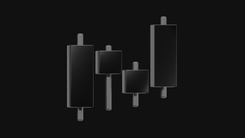- Wallet
- Coinhold 14% APY
- P2P No fee
- Mining
- Referrals
- About
- Help center
- Support
- FAQ
- Support
- For business
What Are Reverse Swaps and When Should You Use Them?

Swaps are among the most flexible tools in a trader’s arsenal. They allow for quick position changes, risk management, and asset hedging. One particularly interesting type of swap is the reverse swap. This instrument has become widely used in the crypto market and is popular among both speculators and professional hedgers.
In this article, we’ll break down what reverse swaps are, how they differ from regular swaps, when to use them, and what risks you need to keep in mind.
What Is a Swap — The Basic Concept
Before discussing reverse swaps, it’s important to understand the essence of a swap deal. A swap is an agreement between two parties to exchange assets or obligations for a certain period and at a predetermined rate.
In traditional finance, a classic example is a currency swap: one party lends USD, the other lends EUR, and after the term ends, they return the assets with a pre-agreed yield.
In crypto, the most common type is the perpetual swap — a derivative contract that allows you to bet on the rise or fall of an asset’s price without owning it. They trade like futures but without an expiration date.
What Is a Reverse Swap?
A reverse swap is a derivative contract where settlements are made in the base asset, not in the quoted currency.
Simply put:
- in a regular swap, you trade BTC/USDT, and your margin and profit/loss are calculated in USDT
- in a reverse swap, you trade BTC/USDT, but your profit and loss are settled in BTC.
This means that if you open a position on BTC and the price goes up, you earn more BTC. If the price goes down, you lose BTC.
Example: How a Reverse Swap Works
Let’s say you go long 1 BTC at $30,000 in a reverse swap.
The price rises to $33,000. Your profit will be:
(1 / 30,000 – 1 / 33,000) * 30,000² ≈ 0.1 BTC
Result: you’ve earned extra BTC, not dollars. This makes reverse swaps especially attractive to those looking to accumulate or hedge in the base asset.
Why Use Reverse Swaps? Key Advantages
✅ Hedging in the Base Asset
Ideal for miners and crypto funds. If your profits are in BTC, you can hedge against price drops without converting to stablecoins.
✅ Transparent Payout Logic
Many traders find reverse swaps easier to understand: you earn directly in the asset you are trading.
✅ Lower Fees
Exchanges often charge lower fees on swaps settled in the base asset, especially on high-liquidity pairs like BTC/USD or ETH/USD.
When Should You Use Reverse Swaps?
🔸 Miners Hedging Risks
If you mine BTC and fear a price drop, you can open a short position in a reverse swap. If BTC falls, you gain BTC to offset your losses without selling your holdings.
🔸 Investors Holding Assets
If you hold BTC but expect a short-term dip, a reverse swap lets you hedge the drop without liquidating your assets.
🔸 Traders Focused on Growing BTC/ETH Holdings
You can use reverse swaps to grow your BTC or ETH holdings, especially in volatile markets.
How Is This Related to EMCD?
If you mine BTC or LTC, hedging is a key strategy. Instead of instantly converting your crypto and paying fees, you can hedge price risks with reverse swaps.
EMCD offers a product suite enabling you to both mine and manage your crypto income. One key tool is the EMCD Pool, the largest mining pool in the CIS, providing stable BTC payouts with transparent statistics.
Hedging via reverse swaps is a smart move for EMCD Pool users, especially in unstable markets. Since your income is in BTC, it makes sense to hedge directly in BTC rather than converting to stablecoins.
Risks of Reverse Swaps
- Higher Income Volatility
Profits and losses are in the base asset — if BTC drops after you earn it, your fiat equivalent may decrease. - Complex Calculations
Reverse swaps require an understanding of base asset calculations, which can be tricky for beginners. - Funding Fees Like all perpetual contracts, traders pay or receive funding fees based on market demand for long and short positions.
Conclusion
Reverse swaps are a powerful tool for long-term crypto players. They are especially useful for those earning in BTC, ETH, or other assets: miners, HODL investors, and base asset traders.
Mastering reverse swaps means not just earning from market moves but also protecting your holdings effectively.
If you mine crypto with EMCD Pool, you already have a steady source of the base asset — all you need is to learn how to manage it wisely.




